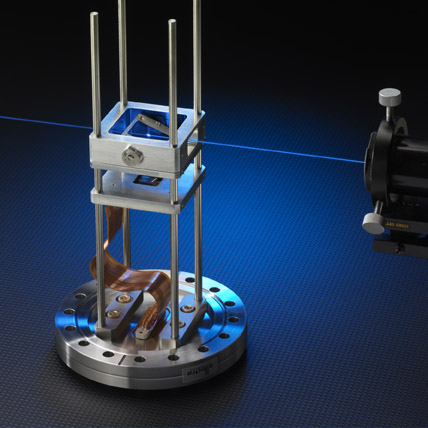Beam position monitor
Beam position monitor
 |
| Photo: Daniel Michon ARTECHNIQUE |
A transparent X-ray beam imaging and beam position measurement device was developed by workers at the University of Manchester in close collaboration with Dubble staff. The principle of operation of the instrument (patent pending) relies on measuring the radiation scattered from a thin foil placed in the path of the beam. The variable tilt of this foil provides a geometric magnification (enlarged footprint) of the beam in the vertical direction. We use carefully polished low-Z materials for the foils in order to avoid wavefront distortions and the introduction of anomalies in the transmitted X-ray beam because of absorption edges. The fact that the foil scatters a small amount of X-rays in all directions is exploited by our design.
An image of the beam is obtained by one of three proposed lens-less methods. We have performed proof of concept experiments for two of these methods: direct imaging in near field mode and imaging using a high-resolution 2D collimator. The third method we aim to study is coded aperture imaging which has the benefit of a significant higher signal-to-noise ratio compared to the other two methods. To this end we have laser cut several aperture plates including so called uniform redundant arrays (URA). URA arrays have been used for many years to image gamma-ray sources in astronomy. The 2D imaging system uses a monolithic active pixel sensor (APS) X-ray imager. In order to interpret the high data volume from both detectors, they are equipped with an embedded system that provides high-level image processing functions implemented in hardware. These functions enable real-time processing of the data and produce feedback signals to the beam line optics.
Several devices can be operated simultaneously due the low beam attenuation. This will provide the opportunity to measure angular beam drifts but also to extend the range of beam parameters studied.



